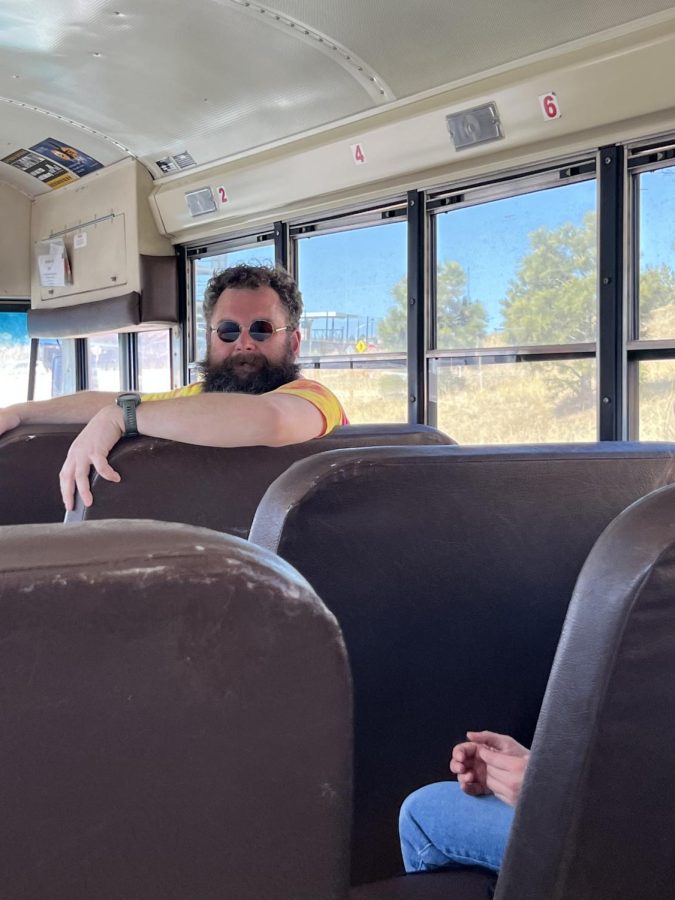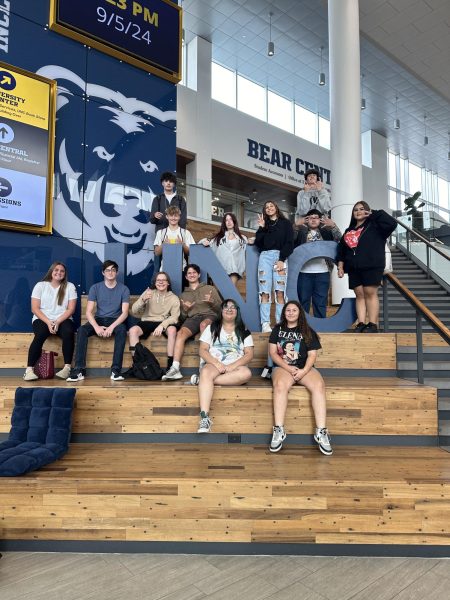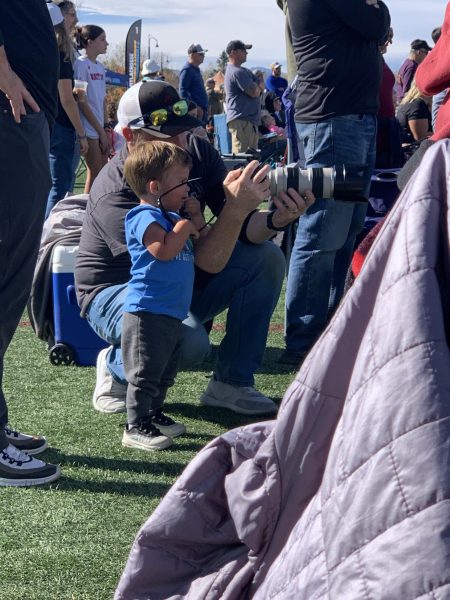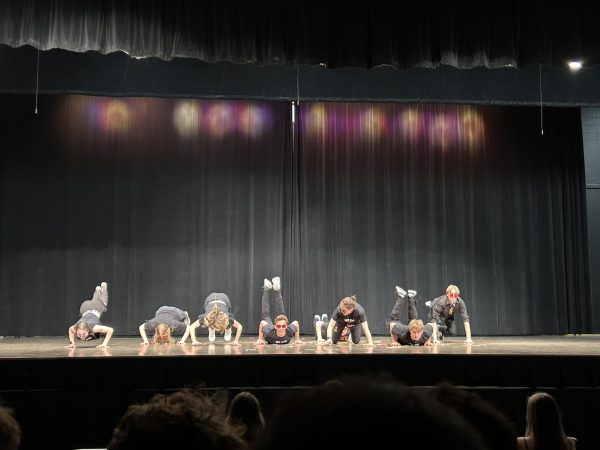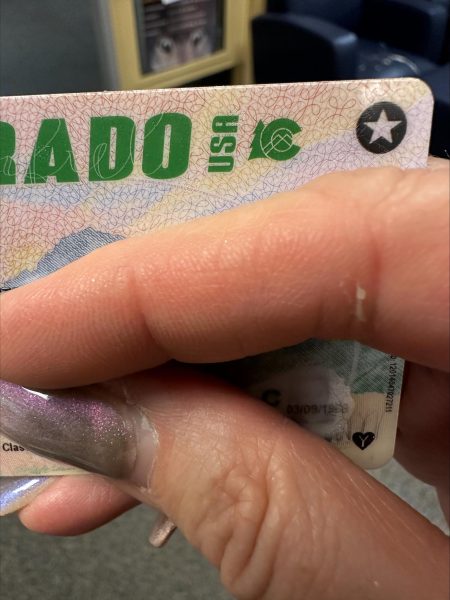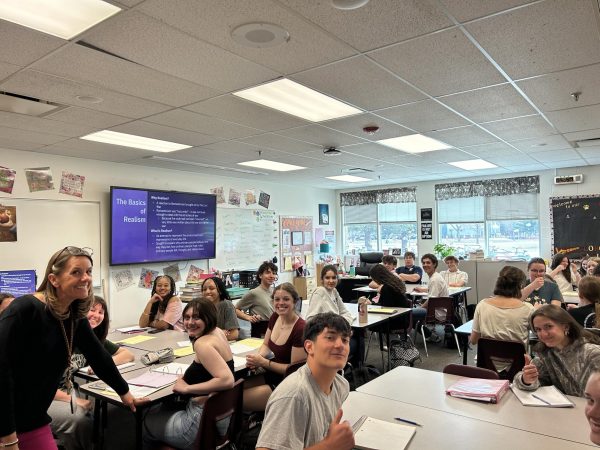A science anomaly
Science Olympiad coach Mr. Flygt heads down to Colorado Springs with the team.
If you have ever wondered where the semi-smart to extremely smart people get together and show off their knowledge and love for test taking in a highly competitive environment, you would be alone. However the answer to your thoughts is Science Olympiad!
Science Olympiad is a middle and high school STEM competition where teams compete in events to win. High schoolers against high schoolers and middle schoolers against middle schoolers, they figured that high schoolers against middle schoolers was a little bit unfair.
The events range from catapult and plane building to lab events to plain old tests. Depending on the event, there are two to three people allowed to compete for any one team in a particular subject.
These twenty-three subjects/events are spread into seven, fifty-minute time slots from eight am to two-fifty pm. Usually, there are four events going on at a time.
The goal when choosing events and scheduling time slots is to have each member have around four events in the day, this way they have time to eat and prepare for other events.
Rocky Mountain’s team of thirteen went to State and got 18th after placing 14th at Regionals. Regionals took place at Fossil Ridge High School, and State took place at the University of Colorado Colorado Springs (UCCS).
Placement for scoring works like golf, all of the placements each team of two/three get in their events are added together and the lowest score gets first and so on. So our overall 2nd place in detector building lowered our regional score and our overall nineteenth in cell bio raised it, we want the lowest score.
An average competition day typically starts with us arriving at the location late and having the two people in the very first event of the day have to sprint off the bus and run into their testing room sweaty and breathing heavy.
If you don’t have any event the first hour, you have time to take a breath and map out your path for all your events, which you will inevitably forget and still end up lost and running around like a headless chicken. This adds to the adrenaline of the competition.
Some people have to impound the thing that they built. This is basically putting all of the things you built like planes, catapults, wooden cars, and wifi antennas in a locked room so that you don’t reuse a project for multiple teams, and so you don’t make adjustments.
This is also when you get checked for rule violations–like size requirements and material use.
Without fail, one of the projects built by the team will not fit guidelines, so then there is a thirty minute scramble to make it work or just take the penalty points and/or not compete.
No matter what your events are and what breaks you have between them, you will always end up lost and late to at least one of them.
Running around an unfamiliar campus not knowing what building is which, forgetting which side is north and not understanding that typically the 200 rooms are on the second floor is par for the course.
For a competition of brains, there is a lot of running.
Also, no matter how prepared you are for your event or how many notes you took, there will be at least three questions you are completely guessing on.
For Science O, you choose your events and for the most part, you stay in that event. Sometimes we have to move people in or out of events due to conflicting time slots.
Team members will have their finalized events about six months before competition day. That is six months of building and studying time.
For the most part, this really helps, but there will always be those few students flying by the seat of their pants.
Surprisingly, the majority of the time this happens, the person who knows nothing about the event isfairly successful.
Now, you may ask, “How could they not know the event they had six months to prepare for, and how were they successful?”
Well, there are a few things that I have to say to that.
First, every competition day there is at least one person who forgot what events they had signed up for until they look at the team schedule and then the student has to wing an entire event they completely forgot about.
Second, there is the person who didn’t study at all and just goes with the flow, relying on studying they did years ago and their knowledge from science classes.
Third, there is the student who had to fill in for a missing team member and is learning as they go.
And as I said, Science Olympiad is an event of highly competitive semi-smart to extremely smart people and we always want to show off how smart we are in a subject we have never learned anything about.
Our competitive nature, STEM classes, and desire to do well makes those students tossed into events do better than expected.
Now, this may not be the case for all schools, but that is how it goes at Rocky Mountain High School. Most people, including ourselves, are baffled at how we continue to place well in events and go to State with this system.
The past four years I have been on the team, I and the other members of the team have walked away from Regionals saying, “There is no way we are going to State.” And for the past four years we have gone to State and gotten at least one team in the top five of an event.
Sheer force of will and desire of academic validation has made the Rocky Mountain Science Olympiad team a force to be reckoned with. We don’t even know the power we hold!


